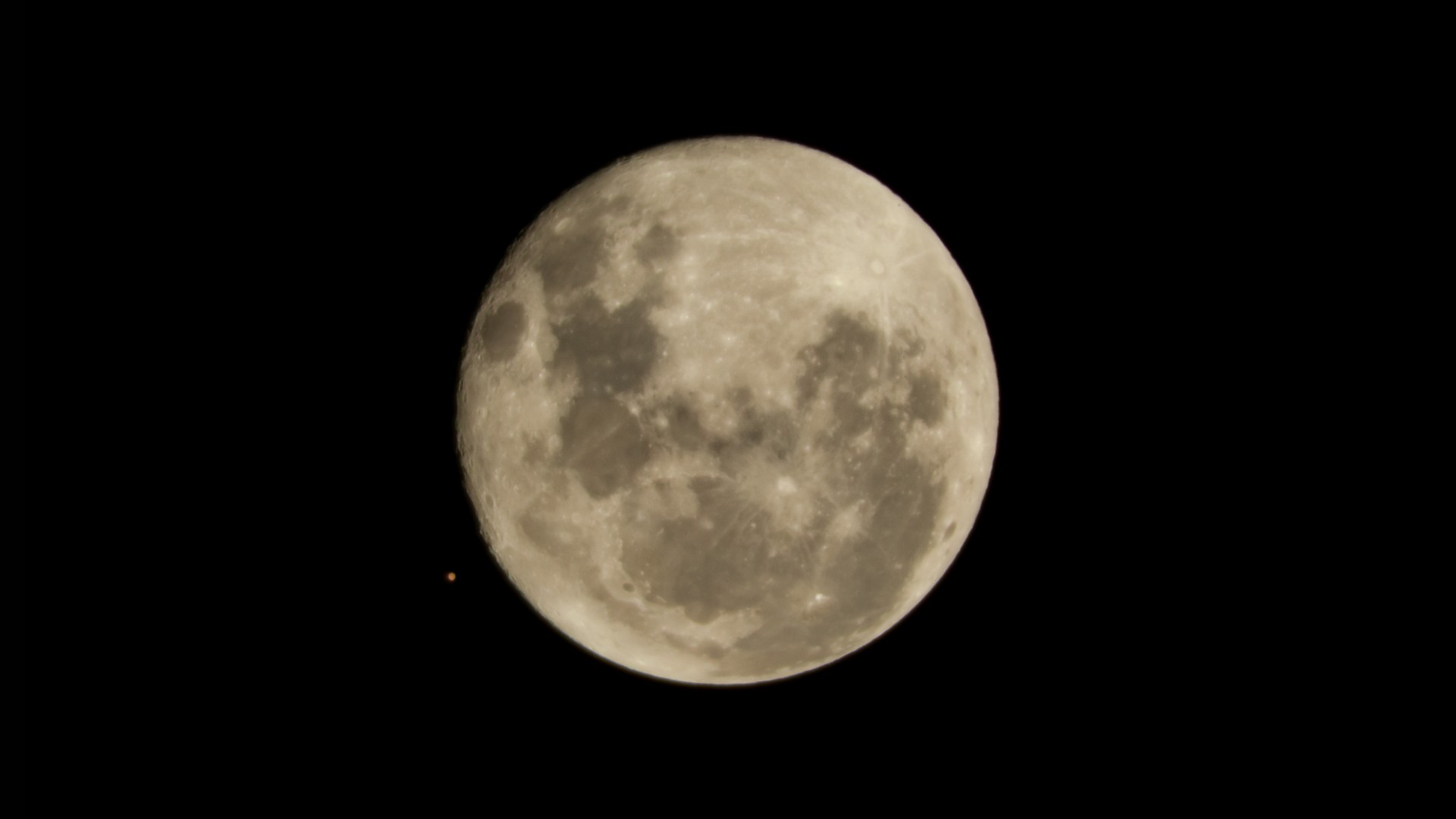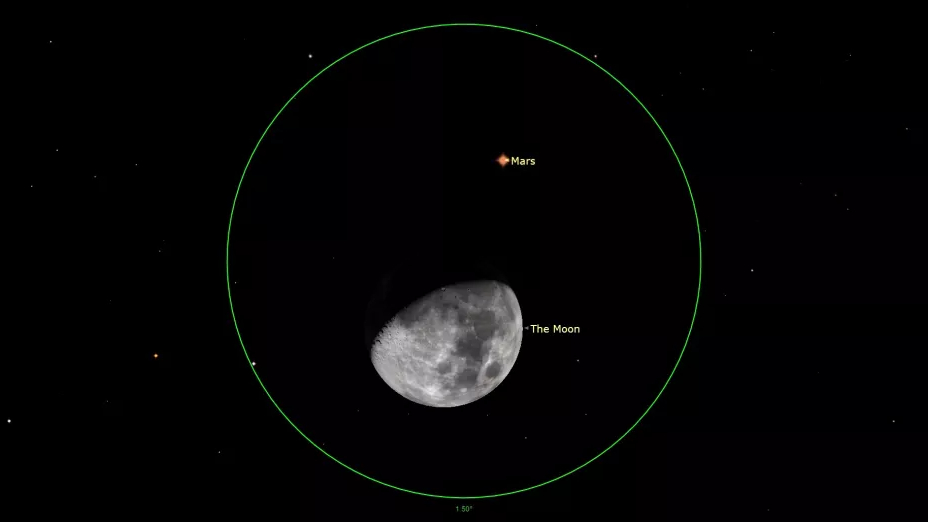Mars is about to be eclipsed by the moon. Here's how to watch.
On Monday (Jan. 30), the moon will pass in front of Mars from the perspective of Earth in what's known as an occultation.

It's time to take the telescope out.
On Monday night (Jan. 30), the moon will eclipse Mars in what's known as an occultation, during which the moon will pass in front of Mars from the perspective of Earth.
Unfortunately only a small swath of the planet will be able to see the occultation, but that does include the southern United States, from southern California all the way to northern Florida, and as far north as Oklahoma, according to skywatching site In-the-sky.org. Other viewing areas include Mexico, the Caribbean, Central American, and northwestern South America. A full list of viewing times by location for both the lunar occultation of Mars and the appulse of the moon and the Red Planet can be found on Live Science's sister site Space.com courtesy of veteran skywatcher Joe Rao.
For those who can't see the event in person, the Griffith Observatory in Los Angeles is hosting a free online livestream of the lunar occultation of Mars courtesy of the observatory's website or its YouTube channel. The livestream begins on Monday (Jan. 30) at 11:00 p.m. EST (0400 GMT on Jan. 31) and will last for two hours.

For those who live outside the zone of visibility of the lunar occultation, you'll still be able to witness the conjunction of the moon and Mars, as the two celestial bodies will share the same right ascension (celestial equivalent of latitude) in an arrangement known as a conjunction. They'll also be making a close approach, known as an appulse.
From New York City, the moon and Mars will be just one-tenth of a degree apart, according to In-the-sky.org. The duo will be visible from 12:10 p.m. EST (1710 GMT) until 3:23 a.m. EST (0823 GMT), and they'll be able to fit within the field of view of a telescope. You'll also be able to see the pair with binoculars and the naked eye.
As a 10-day-old moon in its waxing gibbous phase, its surface will be 74 percent illuminated from the perspective of Earth. It will be quite bright with a magnitude of -12.3, while Mars will be significantly less bright at magnitude -0.3.
Sign up for the Live Science daily newsletter now
Get the world’s most fascinating discoveries delivered straight to your inbox.
Both the moon and Mars will be less bright than they were during their last occultation, which occurred in December 2022 during a full moon.
Originally posted on Space.com.

Space.com contributing writer Stefanie Waldek is a self-taught space nerd and aviation geek who is passionate about all things spaceflight and astronomy. With a background in travel and design journalism, as well as a Bachelor of Arts degree from New York University, she specializes in the budding space tourism industry and Earth-based astrotourism. In her free time, you can find her watching rocket launches or looking up at the stars, wondering what is out there. Learn more about her work at www.stefaniewaldek.com.










